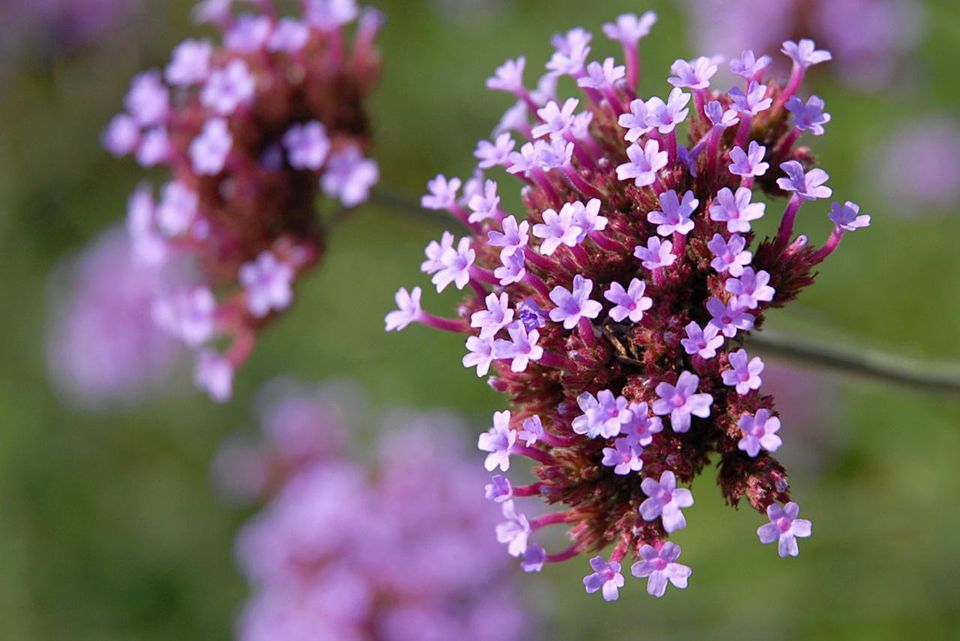
Verbena is a garden essential that blooms from spring to fall. Planting verbena, whether annuals or perennials, ensures summer flowers when planted in the sunniest and driest area of the garden.Plants will grow in clumps that reach 6-10 inches in height. With colors ranging from mauve, purple, white, pink, apricot, or red, verbena is a popular hanging basket plant, and also looks good in gardens, as edging, or in window baskets. Gardeners who love long blooming time, will also love verbena’s ability to attract butterflies, and it’s deer and rabbit resistance.
Location
Verbena needs 8-10 hours of direct sunlight every day, so place them in a location that gets full sun. If your plants are too moist and go not get enough sun, they are susceptible to powdery mildew and other diseases. Planting them in the sunniest location in your garden helps prevent this problem.
Soil
Verbena are tolerant of poor soil, but they will grow best if you mix compost, or any organic material into the planting hole before setting the plant. If you are planting from seeds, these plants can take up to a month to germinate. Maintain a temperature and keep them completely covered. If starting indoors, seeds can be planted 6-8 weeks before the last frost date. For quicker results start with transplants from your local garden center. Once the plant has 3-4 leaves, they are ready to go outdoors.
In late winter or early spring, divide established plants. If they grow too large and outgrow their space, they can die out in the center. Plant them in an area with well-drained soil. When planted in soil that becomes soggy after spring rains, perennials will usually dry. Improve drainage by working in organic, properly composted material into your soil before planting. After planting, apply a balanced fertilizer monthly to help them bloom from spring until frost. Extend the bloom time of verbenas by cutting them back and fertilizing them when they start to look lanky.
Water
When growing from seeds or transplants, water your verbena regularly and thoroughly until well established. Verbena are normally tolerant of heat and drought. They do not like boggy conditions but do not underwater. Soggy plants will develop botrytis blight, and drought-stressed plants will attract spider mites. Water your verbena as you would water your lawn, with an inch of rain or irrigation every week.
Verbena and Butterflies
Looking to attract some friends to your garden? Verbena are irresistible to many species of butterflies. Butterflies appreciate large strands of nectar-rich flowers. You can also use a group of containers on your balcony or patio, which will bring the butterflies closer to you and provide shelter from the elements. Adding a clay saucer drinking station will also attract more butterflies to your garden.